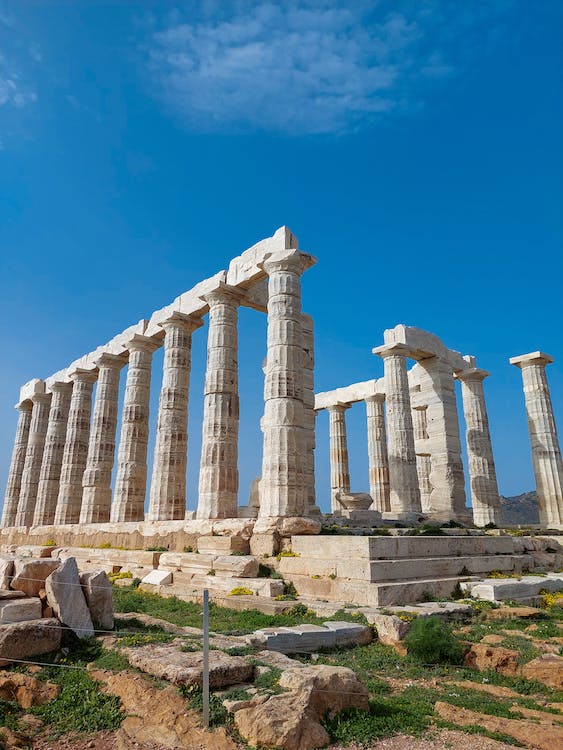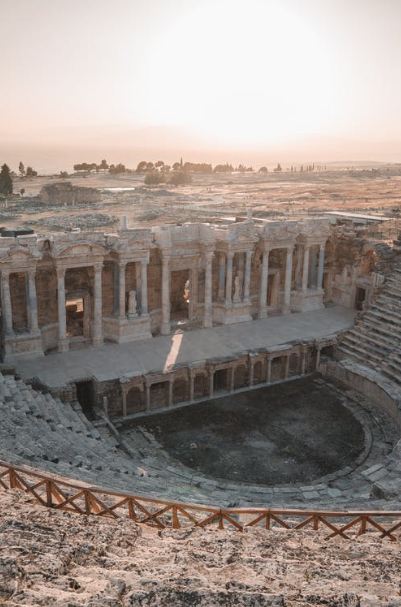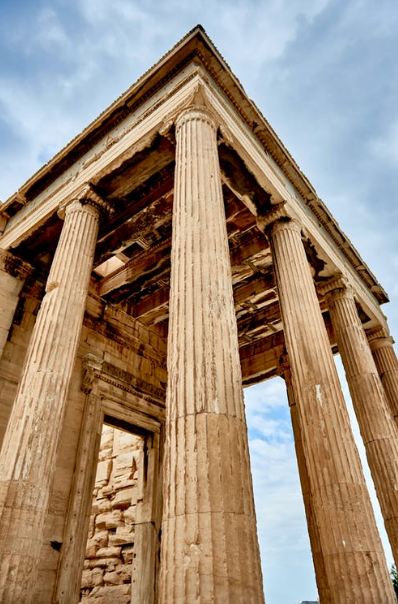Ionic, Doric, and Corinthian columns are the architectural orders that originated in the classic era of ancient Greeks. These architectural orders differ from one another in their structure and outlook. The structural integrity of these columns is commendable in providing support to the buildings. They are quite unique in their style and order that typically represent the Greek civilization. These columns are magnificent in their structure and style that flourished throughout the world.
The foundation of building unique and wonderful architecture has been laid down by ancient Greeks. Today’s modern era is also inclined to derive inspiration and motivation to use these columns in their structures. Almost, each era followed these architectural orders with modifications sometimes. Moreover, there are structures of the Greek era’s architecture that are restored and modified in different parts of the world.
The Three Orders of Greek Architecture
There are mainly three orders that are commonly utilized in Greek architecture i.e. Doric, ionic, and Corinthian. These orders bear differences in their structures and styles and hence possess particular characteristics in terms of their patterns and overall organization.
All of the three classical columns are highly applicable to numerous structures. Each kind has its own characteristic features and particular implications. Therefore, to understand and acknowledge the most appropriate and convenient form of order among them, let us discuss each type of architectural orders separately.
Doric order
It is the oldest Greek architectural order. Doric columns are also considered to be the heaviest and simplest among all the other types of columns. The Doric order of architecture originated in the 7th century B.C. that was utilized in their earliest structures including monuments and buildings. Initially, the Greeks used wood in their columns. With the advent of this order in the architectural world of ancient Greeks, stones and marbles were used in the formation of columns.
Structural Framework of Doric Order
In these orders, the columns are positioned together closely. The columns are fluted and there is no base at the bottom. They are placed without bases. The Flute is a term given to the shafts sculpted with concave curves. The main part of this order in the column is plain and unadorned. This order also features a particular entablature along with ornamentations and decorative patterns above the column. The entablature features a unique frieze that is adorned with vertical lines termed as Triglyphs.
Triglyphs and Metopes alternating around the Frieze are located on a plain band which is termed as Architrave. This is the point where the column extends to the frieze point. In the location of Metopes, decorative patterns or different figures are molded. Triglyphs included three parts that are in the raised position and are called Metopes.
This order flourished at its best in the Archaic period that ranges from 750-480 B.C. in Greece. The popularity of the Doric order was far more on the mainland than in the Greek lands themselves. Due to their massive and quite imposing appearances, the Doric order seems to inspire through different ages.
Ionic Order
Doric order is followed by Ionic order in the Greek era of architecture. The name Ionic order was derived from the place where the order originated for the first time, the Ionian islands of Anatolia which is present-day Turkey. This order started to appear in the architectural structure of the 6th century B.C. In the Greek mainland, particularly on Aegean islands. The Ionic order of architecture was popular and used in most of their constructions frequently.
One of the Roman historians named Vitruvius related the structure of ionic order with female form calling it delicate. This was compared in contrast to the previous Doric order which was compared with male form due to its massive and imposing appearance.
Structural Framework of Ionic Order
The ionic order was particularly preferred for small buildings and interiors. This order can be easily recognized through its use of two scrolls in its structure called Volutes located on the Capital part. The scrolled capital located on top of the column is the characteristic feature of the Ionic order of Greek architecture.
The volutes are often decorated with patterns featuring nautilus shells and animal horns on them. Oval decorative patterns are often generated on the middle parts of Volutes which is a curved section and are termed as Egg and Dart.
The entablature of Ionic order tends to be narrower than the Doric ones. It is located above the capital of the column along with the Frieze part which is covered with several carvings in a continuous band form. An unadorned and undecorated frieze is utilized in the structures having ionic order instead of triglyphs and metopes, that were part of the Doric order of architecture.
An example of Ionic order is remarkably evident in the structural design of Greek architecture, the little Temple to Athena Nike, situated at the entrance to the Athens Acropolis. This marvelous temple with Ionic order was constructed by Callicrates in 448-421 B.C.
Another example that emerged in the 16th century with ionic order in its architecture is La Ratunda. This was designed by Palladio in Vicenza. This temple represents one of the beautiful incarnations of ionic order in structural architecture.
Corinthian Order
The third architectural order of ancient Greeks is the Corinthian order that derives its name from the city of Corinth. This order was supposedly designed by a sculptor named Callimuch. It was originated towards the end of the 5th century in the city of Corinth.
Greeks had not used this order in their architecture as much as they used the other two types. However, Romans greatly preferred Corinthian order in their buildings and other architecture. Some of the earliest and initial examples of Corinthian order date back to 430-323 B.C. as well.
Structural Framework of Corinthian Order
In structure, the Corinthian order bears similarities with the Ionic order regarding its base, column, and entablature. However, the difference lies in the capital part of the Corinthian order. This design uses Acanthus leaves in its Capital part. Curly Acanthus leaves are featured on this capital part making it impressively decorated with carved patterns.
The characteristic features of their structure include an adorned capital above the column with Acanthus leaves and tiny scrolls. The column is grounded on a base with a plain frieze part. The triglyph and metopes are not featured on the frieze part of the structure which is otherwise used as a significant feature in the Doric order. In this regard, the Corinthian order deviates from the Doric order.
The temple of Apollo Epicurius built in the 5th century can be taken as one of the oldest examples of the Corinthian order. An extraordinary example of the architecture featuring Corinthian order can be the Roman Pantheon that was built around 126 A.D.
The later architecture after the ancient Greek times also incorporated some modifications in the design. For example, in ancient Greek architecture, fluted columns were used in the Corinthian order. However, in the architecture afterward, like Pantheon, used fluted columns are not utilized.
Several variations took place in the architecture left by Greeks. Romans made their variation which further endured variations in the later generation through a great deal of time. In Greeks and Romans architecture, there is one simple difference that is quite evident in their structures. Greek architecture used columns for support purposes only. While the Romans used columns for the purpose of support as well as decoration and ornamentation.
In the Greek era, the Colosseum temple is the best example that portrays all three orders in its architecture. From the bottom-up, Doric, Ionic, and Corinthian orders of architecture are featured on the exterior of the Colosseum temple.
Conclusion
Besides all the significant attributes and symbols of the classical age that have transcended till today, the architectural orders originated by ancient Greeks then, are surely an inspiration and motivation for today’s modern era as well. Romans also made sure to follow and incorporate these styles and models in their architecture.
Subsequently, in the later eras like Renaissance, neo-classical age, the Baroque, 18th, 19th, 20thcentury, these orders are evident in their relevant architectures. Even in today’s era, these splendid styles are still being used in the construction of houses, public buildings and other architecture. Therefore, with all the defined and elaborated characteristics of each column i.e. Doric, Ionic, and Corinthian here, one can easily opt for the best type of architecture that will suffice the taste of the modern age as well as the splendor and quality of antiquity.



